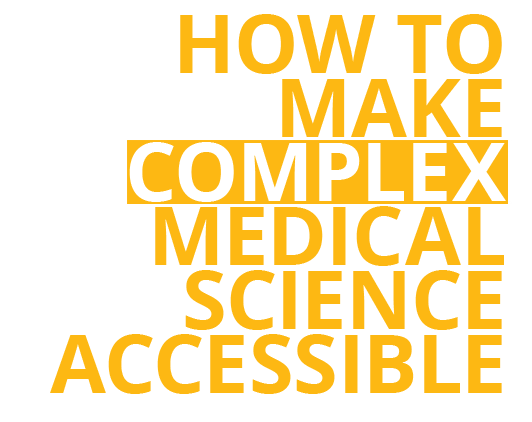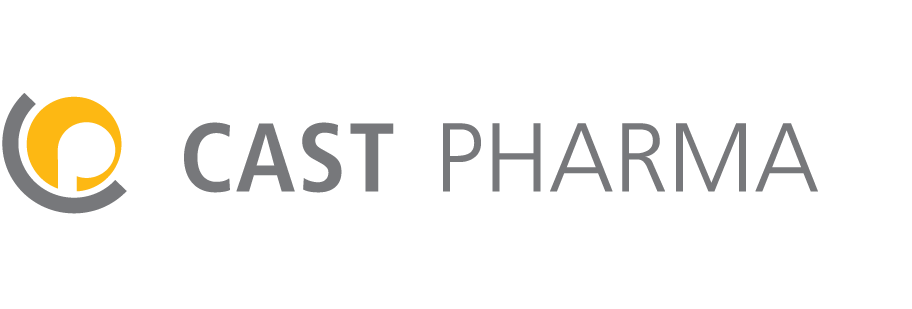Everyone employed in marketing, medical affairs, learning, and training encounters the challenges of communicating complex, scientific material in a clear and accessible manner. This expert blog contains advice and best practices for presenting scientific information to your target audience, from pedagogy to design, technical specs to usability, timelines to costs and everything in between.


VISUALSTORYTELLING
Visual stories for:
Output formats:
If you are looking for our animal health solutions, please visit our website
CAST ANIMAL HEALTH

Cloud-based explainer video tools versus a visual storytelling agency: which one is right for you?
/in Medical congresses & conferences, Medical affairs & medical marketing, Medical learning & training, Medical animation and explainer videos /by Eva Anne RentzschWhether you’re a pharma marketing manager or medical communications manager, every day you need to package information attractively for your target audience. Explainer videos can have an enormous impact. But who will write the storyboard? Who will animate the video? And why can’t you just do it yourself with some cheap software? Why bother explaining everything to an agency? Read more
How to develop engaging interactive presentations for conference booths with PowerPoint
/in Medical congresses & conferences, Scientific slide decks /by Stefan WolfAfter two tough years of the COVID-19 pandemic with almost no on-site scientific events, medical conferences are finally getting back to normal. People are increasingly meeting face-to-face again, not only via Teams, Zoom, or virtual conferences. It is once again time for creative ideas to make booths attractive and fill them with compelling content.
Read more
Different tools for different audiences: animated PowerPoint presentation vs animated film
/in Medical congresses & conferences, Medical affairs & medical marketing, Medical animation and explainer videos, Scientific slide decks /by Alexander RoederHCPs, patients, and employees need reliable information, so they can make more informed decisions. Your MSLs need to learn how to communicate with specialists about newly published clinical trial results. Read more
Tailor-made country adaptations for animated films
/in Medical affairs & medical marketing, Medical animation and explainer videos /by Stefan WolfClients often ask us if we can translate videos we’ve produced for them. Yes, we absolutely can! We have translated our films into many languages, including German, French, Spanish, Italian, Hungarian, Russian and more. Read more
Why pharmaceutical companies need a visual storytelling agency
/in Medical learning & training, Medical animation and explainer videos, eLearning & engaging activities, Scientific slide decks, Illustrations & infographics, Medical congresses & conferences, Medical affairs & medical marketing /by Stefan WolfPharmaceutical and biotech companies today work with many specialized agencies to position their brands and develop their communication goals for different therapeutic areas. It is often difficult to determine which tasks can be performed by which type of agency.
Read more
Why it makes sense to hire an outsourcing agency instead of creating slide decks internally
/in Scientific slide decks, Medical congresses & conferences, Medical affairs & medical marketing, Medical learning & training /by Stefan WolfPowerPoint presentations are extremely powerful tools to help pharmaceutical and biotech companies reach their communication goals. They can serve as eLearning courses, scientific platforms, or live-presentations at (virtual) congresses. Unfortunately, despite this potential, the development of PowerPoint slide decks often does not get the attention it deserves. Read more
How a clear goal makes a better slide deck
/in Medical affairs & medical marketing, Medical learning & training, Scientific slide decks, Medical congresses & conferences /by Thomas FreiToday we are going to discuss why not having a clear goal is a reason a slide deck might fail. But why do our slide decks need a goal in the first place? Think about it! Read more
Bringing scientific study data to life with animation
/in Medical congresses & conferences, Medical affairs & medical marketing, Medical learning & training, Medical animation and explainer videos /by Stefan WolfAcademic publications present scientific studies and clinical trials in a text-heavy format. That means several pages of black print on white paper. Read more
Making Scientific 3D Computer Animation that Pays Off
/in Medical affairs & medical marketing, Medical animation and explainer videos /by Colin KorellThe three rules for when to use 3D computer animation in MoA and MoD videos
When it comes to mechanism of action and mechanism of disease videos, 3D computer animation is the gold standard. 3D animation can help an audience fully understand how a drug blocks a receptor or how a virus infects a cell. Read more
How to transform a boring slide deck into an exciting scientific visual story
/in Scientific slide decks, Medical congresses & conferences, Medical affairs & medical marketing, Medical learning & training /by Stefan WolfIt’s true. PowerPoint presentations have a bad reputation in the pharmaceutical and biotech industry. All too often, they’re boring and stuffed full of information that nobody can remember, or else so badly designed that they leave audiences bewildered. And yet every day countless new bad slides are created for yet more yawn-inducing presentations. Read more
How slides can be significantly improved with three simple steps
/in Scientific slide decks, Medical congresses & conferences, Medical affairs & medical marketing, Medical learning & training /by Eva Anne RentzschWith today’s slides, the “before and after” effect is not immediately obvious, but we still have some tips for their improvement that can be applied to many other cases. Notice that the initial slide uses the same colors for both the left and right infographics. This is misleading for the viewer, because the representations actually have nothing to do with each other.
Read more
How to present facts with visual storytelling
/in Scientific slide decks, Medical congresses & conferences, Medical affairs & medical marketing, Medical learning & training /by Eva Anne RentzschToday we want to look at an example of how facts can be either lost or presented with impressive visual storytelling. The initial slide lists too many facts as boring bullet points, so the target audience is forced to read text instead of focusing on the presenter.
Read more
How simple infographics can add value to your presentation
/in Medical learning & training, Scientific slide decks, Illustrations & infographics, Medical congresses & conferences, Medical affairs & medical marketing /by Eva Anne RentzschToday’s slide illustrates how simple infographics in combination with precise statements can add value to your presentation. The original slide shows a clear gap between visuals and texts: the visuals fail to support the content, misdirect the viewer’s focus, and are even misleading.
Read more
Transforming a boring image with bullet points into a slide reflecting the beauty and complexity of nature
/in Medical learning & training, Scientific slide decks, Illustrations & infographics, Medical congresses & conferences, Medical affairs & medical marketing /by Stefan WolfRead more